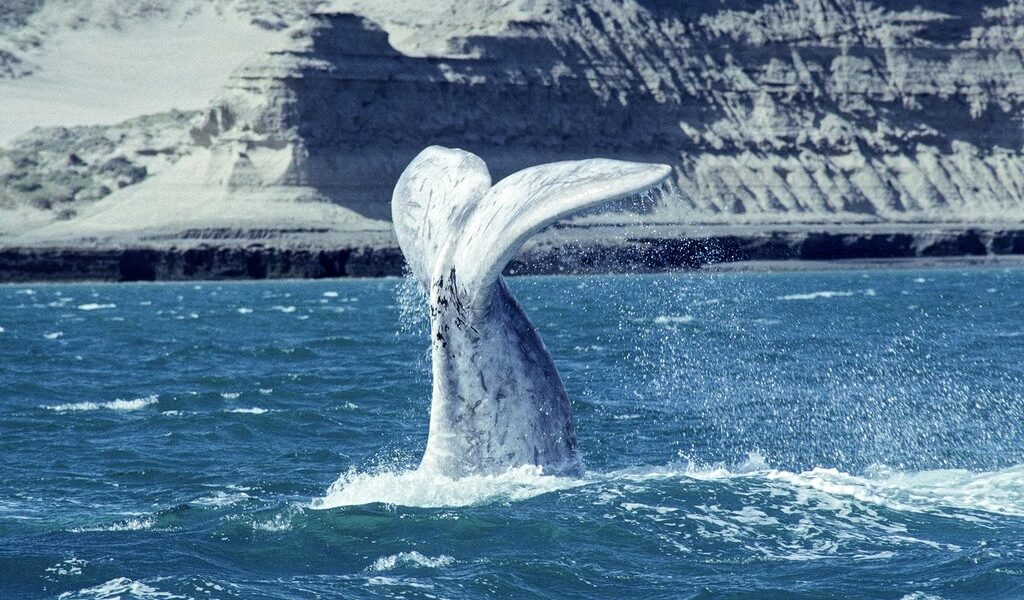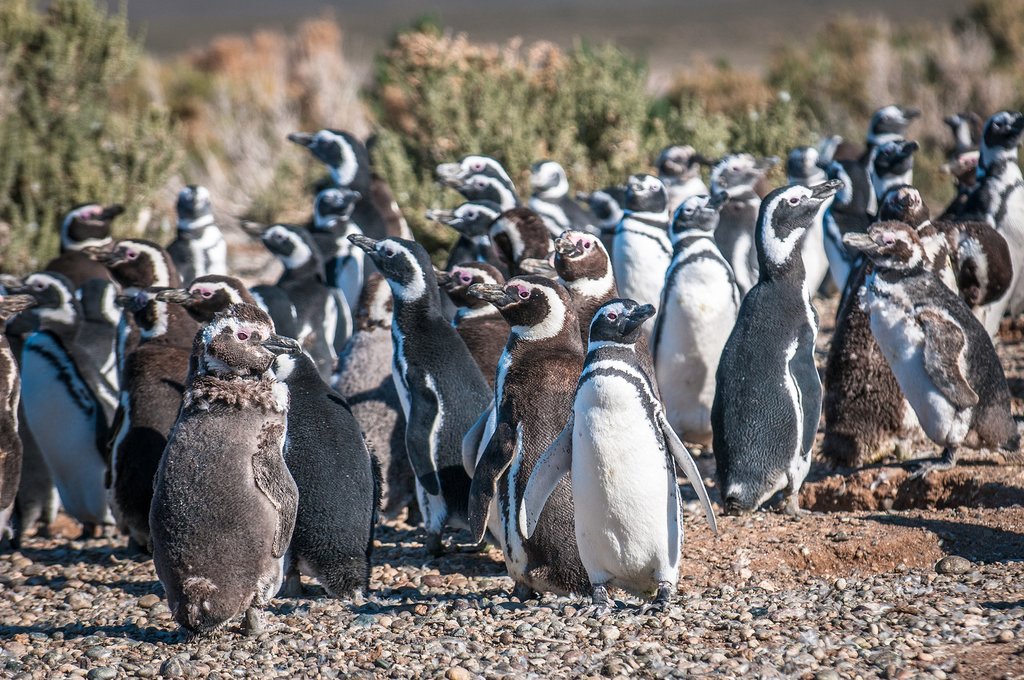
Argentinian Patagonia is one of South America’s most pristine and splendid landscapes, its mountain ranges and glaciers reminding travelers of the most recent Ice Age. The vast stretches of pampas (steppe) hint at boundless adventure, while the country’s remote and scenic Ruta 40 is Argentina’s ultimate road trip. _x000D_
Patagonia’s Highlights: A Land of Immense Scale and Untamed Beauty
Argentinian Patagonia unfurls across a staggering 402,700 square miles of southern South America. To provide a sense of scale, this expansive territory roughly equals the combined landmass of Texas and California, two of the largest states in the United States. Imagine a journey across this vast landscape, a realm where the horizon seems to stretch into infinity. As you traverse Patagonia, you’ll be greeted by seemingly endless prairies and high desert plateaus, environments of stark beauty and captivating solitude. But the landscapes of Patagonia are anything but monotonous; these open spaces give way to the stunning contrast of pristine alpine lakes, dense forests teeming with life, and the formidable presence of jagged mountain ranges. These mountains, sculpted by time and the elements, are home to magnificent glaciers, icy rivers that slowly carve their way down to the sea, creating a spectacle of breathtaking grandeur.
Patagonia is also a sanctuary for an extraordinary array of wildlife, creatures uniquely adapted to thrive in this challenging environment. Keep your eyes peeled for the comical waddle of penguins along the coast, the elegant stride of the rhea (a large, flightless bird closely related to the ostrich) across the plains, and the majestic presence of elephant seals basking on the shores. Whales breach the surface of the icy waters, a display of raw power and grace. And inland, you may encounter guanacos (relatives of the llama), their curious eyes watching as you pass through their ancient homeland. The sheer diversity and abundance of wildlife make Patagonia a true paradise for nature enthusiasts and wildlife photographers. Every corner of this region seems to hold a new discovery, a new glimpse into the wonders of the natural world.
Exploring Patagonia by bus is certainly a feasible option, especially if you have the luxury of time and are willing to embrace a more leisurely pace. However, it’s important to acknowledge that distances between destinations are considerable, and transport along the remote Ruta 40, a legendary Patagonian highway, can be infrequent. This requires careful planning and a flexible itinerary. For those seeking a greater degree of independence and control over their journey, driving from Puerto Madryn in northern Patagonia to El Calafate in southern Patagonia offers the greatest flexibility. With your own vehicle, you can explore at your own pace, stopping whenever and wherever you desire to immerse yourself in the beauty of the landscape. However, it’s crucial to be aware that one-way drop-off rental fees can be substantial, so factor this cost into your overall travel budget.
For travelers seeking a more budget-conscious approach to experiencing Patagonia’s main attractions, a strategic approach is to divide the trip into two distinct halves. By focusing on specific regions, you can minimize travel costs and maximize your time exploring each area. One option is to base yourself in Puerto Madryn and use it as a springboard for visiting Península Valdés, a UNESCO World Heritage site renowned for its marine wildlife, as well as the charming towns of Trelew, Gaiman, and Punta Tombo, each offering unique cultural and natural experiences. The second half of your journey could then center around El Calafate, a vibrant town that serves as the gateway for exploring the iconic Ruta 40 and venturing into the magnificent Parque Nacional Los Glaciares, home to some of the world’s most spectacular glaciers. Conveniently, Puerto Madryn and El Calafate are connected by regular flights to Buenos Aires, the vibrant capital of Argentina, making it easy to connect to international destinations and continue your adventures.
Wildlife Watching on Península Valdés: A Sanctuary of Marine Wonders
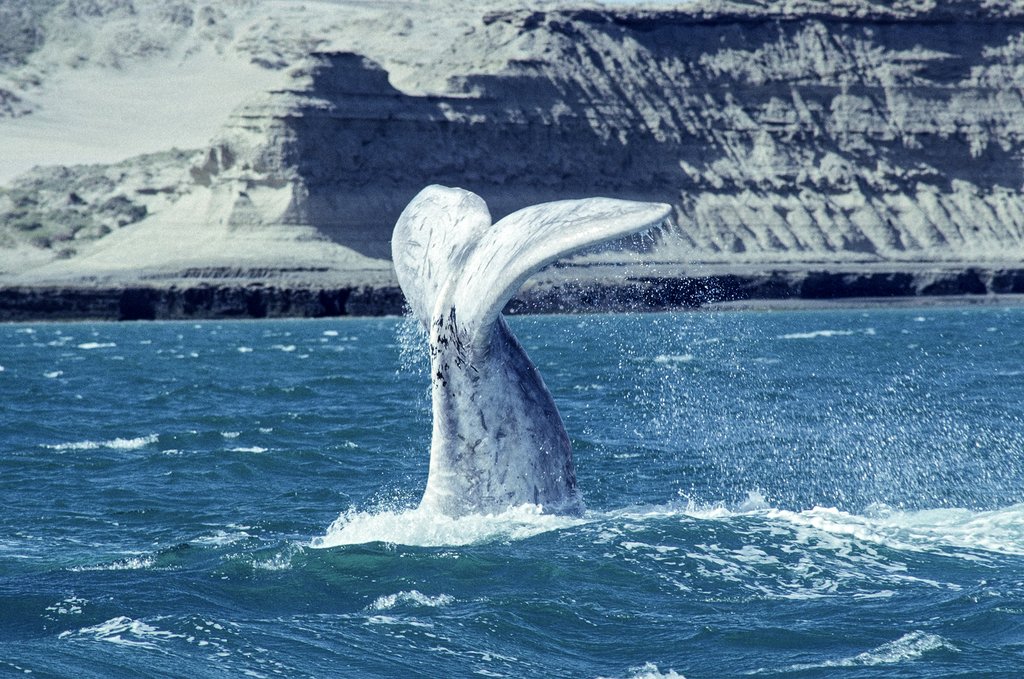
A readily accessible and unforgettable day trip from Puerto Madryn, the Península Valdés is a sprawling 3600 square kilometer UNESCO World Heritage site, globally renowned as a haven for diverse and abundant wildlife. The peninsula is connected to the mainland by a narrow isthmus, a slender strip of land that marks the entrance to this natural wonderland. Once you cross this isthmus, you’ll find yourself immersed in a landscape of rugged beauty, where gravel roads meander along the coastline, offering breathtaking vistas at every turn. Among the many highlights, consider embarking on a boat trip from the quaint village of Puerto Pirámides. This is a unique opportunity to witness the endangered ballena franca austral, also known as the southern right whale, as they migrate to these waters to breed between June and mid-December. The sight of these magnificent creatures breaching the surface is an experience that will stay with you long after you leave Patagonia. These gentle giants arrive annually to calve and raise their young in the protected waters of the peninsula.
For those who prefer to remain on land, spring offers the optimal time to observe a massive colony of sea lions from the dramatic cliffs of Punta Delgada. The sheer number of these marine mammals, basking in the sun and engaging in playful interactions, is a truly awe-inspiring sight. Alternatively, venture to the gravel beach at Punta Cantor to witness the imposing presence of elephant seals, the largest pinnipeds on Earth. At the remote Punta Norte, you can often observe a fascinating mix of both sea lions and elephant seals, sharing the same stretch of coastline. However, be aware that these gatherings also attract predators. During March and April, killer whales (orcas) frequent these waters to hunt, adding a dramatic element to the natural spectacle. Witnessing these apex predators in action is a powerful reminder of the delicate balance of the marine ecosystem. The rugged cliffs and pristine beaches of Península Valdés provide the perfect vantage point to observe this thrilling display of nature’s drama.
Visiting the Paleontological Museum at Trelew: A Journey Through Time
Located approximately 40 miles (65 kilometers) south of Puerto Madryn, the town of Trelew might appear fairly nondescript at first glance, bearing the hallmarks of a 19th-century settlement. However, this town boasts firm Welsh roots, a legacy that is reflected in its name, which derives from “tre” (town) and “lew” (after Lew Jones, a key figure in the construction of the railway). Stepping back from its historical context, Trelew’s location in the heart of Argentina’s dinosaur country is what truly sets it apart. It is renowned for its singular attraction: the Museo Paleontológico Egidio Feruglio (MEF), an outstanding paleontological museum that showcases Patagonia’s most significant fossil discoveries. This museum serves as a window into the distant past, allowing visitors to explore the world of dinosaurs that once roamed this very land.
Beyond its impressive collection of over 1700 fossils, the museum proudly displays locally discovered dinosaur skeletons, including the iconic Patagosaurus, the massive Tehuelchesaurus, and the intriguing Brachytrachelopan mesai, an unusual sauropod characterized by its short neck. However, the undisputed centerpiece of the museum is the remains of the Patagotitan mayorum, a colossal dinosaur that is believed to be the largest creature ever to have walked the earth. These bones, unearthed as recently as 2012, offer a tangible connection to a time when giants ruled the planet. The Museo Paleontológico Egidio Feruglio also organizes guided tours to the local badlands, offering visitors the unique opportunity to walk among 40-million-year-old fossils, feeling the texture of ancient history beneath their feet. These tours provide a deeper understanding of the geological processes that shaped the Patagonian landscape and preserved these incredible remains for generations to come.
Take High Tea in the Welsh Settlement of Gaiman: A Taste of Tradition
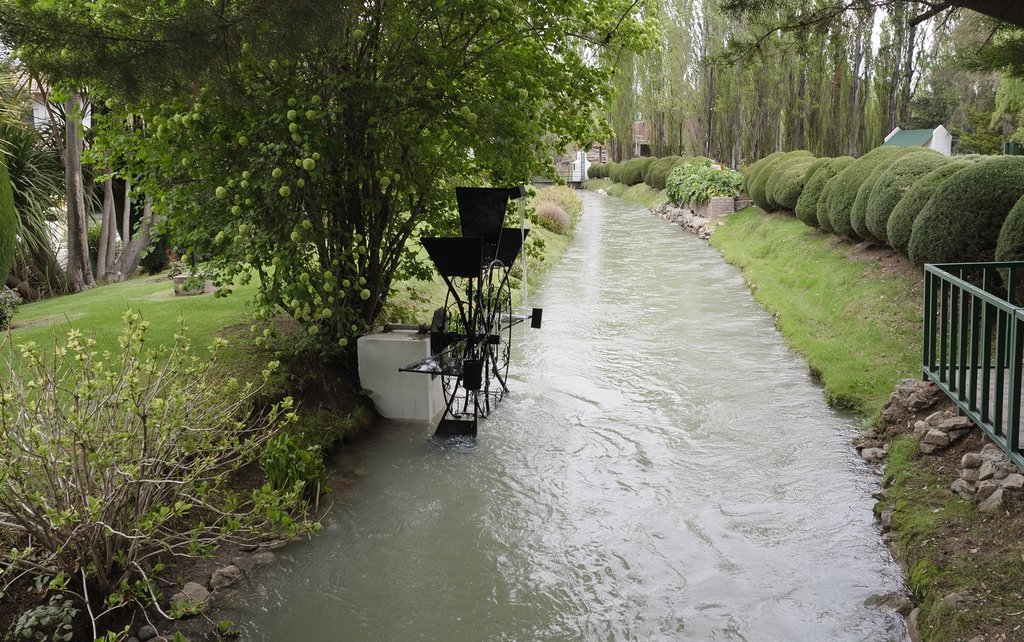
Gaiman stands as the most authentically Welsh of all the Patagonian settlements, a charming and characterful town nestled just 10 miles (17 kilometers) west of Trelew, off the RN 25. Founded by Welsh settlers in 1874, Gaiman holds a unique place in Argentina’s cultural landscape, as it remains one of the few places in the country where you are just as likely to hear the lilting cadence of the Welsh language as you are to hear Spanish. This enduring connection to its Welsh heritage makes Gaiman a truly special destination, offering a glimpse into a distinct cultural identity that has thrived for over a century.
Approximately one-third of the residents of Gaiman are direct descendants of the original Welsh colonists, proudly maintaining the traditions and customs of their ancestors. The town attracts a steady stream of visitors who come to experience its unique atmosphere and, in particular, to indulge in the abundance of teahouses that line its streets. These teahouses offer a warm and inviting atmosphere, where you can settle in for a traditional Welsh afternoon tea. Savor a steaming cup of tea accompanied by a delightful spread of cakes, including the iconic torta negra, a dense and rich fruitcake that is a staple of Welsh baking. Gaiman’s teahouses offer not just refreshment but also a journey into the heart of Welsh culture. In 1995, Diana, Princess of Wales, visited Gaiman and graced the Ty Te Caerdydd teahouse with her presence. Today, the teahouse proudly displays her teacup, a tangible reminder of this special occasion. After enjoying a spot of tea, take a leisurely stroll around town, admiring the historic churches and chapels that stand as testaments to the town’s rich heritage.
Chat with a local specialist who can help organize your trip.
Spot Magellanic Penguins at Punta Tombo: A Penguin Paradise
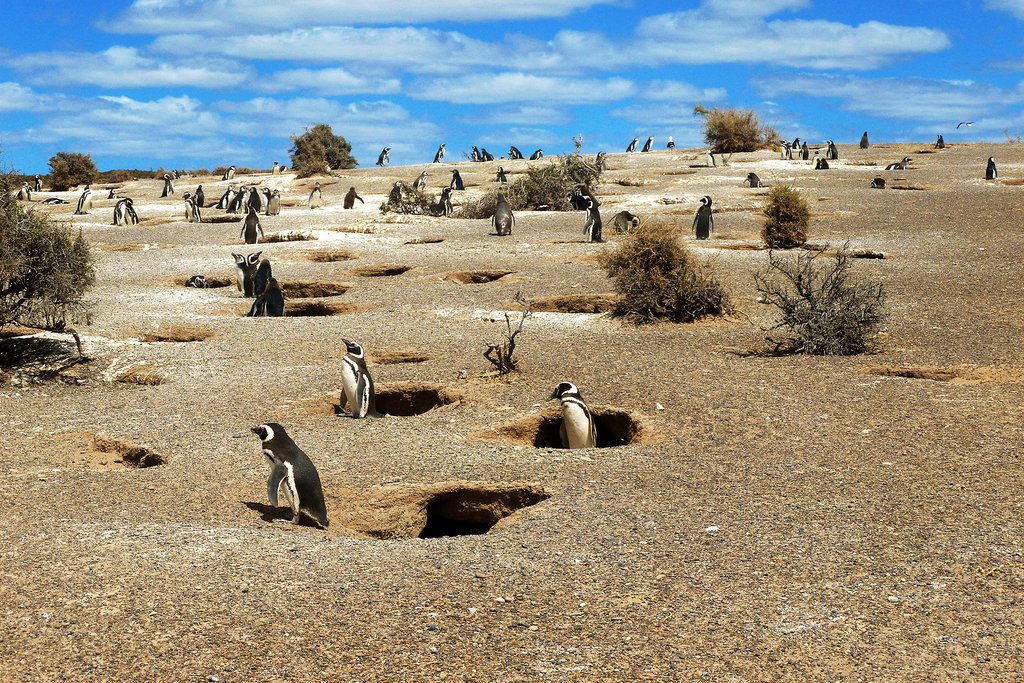
Situated approximately 70 miles (112 kilometers) south of Trelew, accessible via the gravel RP, lies the awe-inspiring Punta Tombo, a sprawling 1200-hectare haven and the largest Magellanic penguin colony in continental South America. This natural wonder is home to an estimated half a million Magellanic penguins who converge here annually to nest, breed, and raise their young. The sheer spectacle of this vast colony is a sight to behold, with penguins waddling across the landscape, tending to their nests, and engaging in their daily routines.
Beyond the penguins, Punta Tombo is a paradise for birdwatchers, offering opportunities to spot a diverse array of avian species, including black oystercatchers, known for their distinctive calls and striking black and white plumage; giant petrels, impressive seabirds with immense wingspans; kelp gulls, scavenging along the coastline; and flightless steamer ducks, unique birds that propel themselves through the water using their wings like paddles. To enhance the visitor experience, an interpretive visitor center provides an excellent introduction to the local fauna and the ecology of the region. Well-marked trails and boardwalks guide visitors around the reserve, allowing them to observe the penguins and other wildlife without disturbing their natural habitat. These carefully designed pathways ensure that visitors can appreciate the wonders of Punta Tombo while minimizing their impact on the delicate ecosystem.
Rolling Along Ruta 40: An Epic Patagonian Road Trip
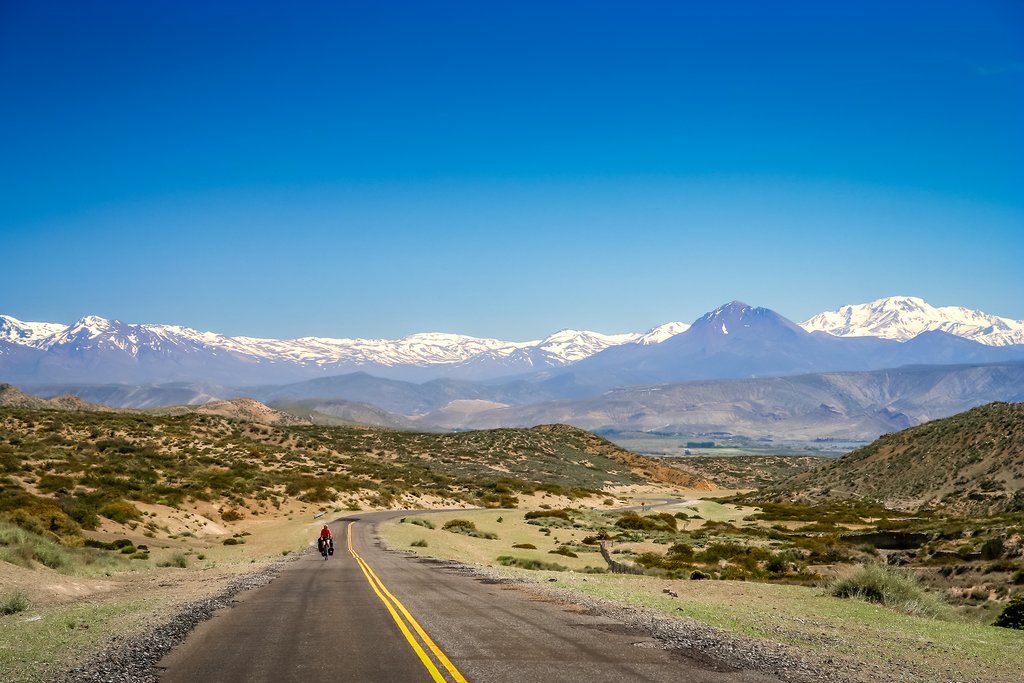
Stretching for an impressive 763 miles (1228 kilometers) from El Calafate to just north of Bariloche, tracing the rugged spine of the Andes mountain range, the legendary RN 40 (Ruta 40) stands as Argentina’s ultimate road trip. This iconic highway traverses some of the most remote and breathtaking landscapes in Patagonia, offering an unforgettable journey for those who dare to explore it. Although much of the route is now paved, Ruta 40 still retains a sense of wildness and isolation, a feeling of being far removed from civilization. Settlements, gas stations, and even fellow drivers are few and far between, adding to the sense of adventure.
The boundless sky and the seemingly endless monotony of the steppe, stretching all the way to the horizon, create a sense of vastness that is both humbling and awe-inspiring. This wide expanse is occasionally broken up by sightings of wandering guanaco and ñandú (rhea), adding a touch of wildlife to the otherwise desolate landscape. In the distance, glimpses of snow-covered mountain peaks beckon, reminding you of the towering Andes that dominate the horizon. Popular with touring motorcyclists and adventurous drivers laden with spare tires and ample supplies of food, Ruta 40 demands preparation and self-reliance. While the route can be driven in a couple of days for those pressed for time, it is far better to savor the experience and dedicate at least five days to the journey. This allows you to fully immerse yourself in the landscape, stop to visit some of Patagonia’s more remote attractions, such as the Cueva de las Manos, and discover some unique estancias (traditional cattle or sheep ranches) that offer a glimpse into Patagonian rural life. Ruta 40 is more than just a road; it’s an experience, a chance to connect with the raw beauty and untamed spirit of Patagonia.
See Ancient Rock Art at Cueva de las Manos: A Glimpse into the Past
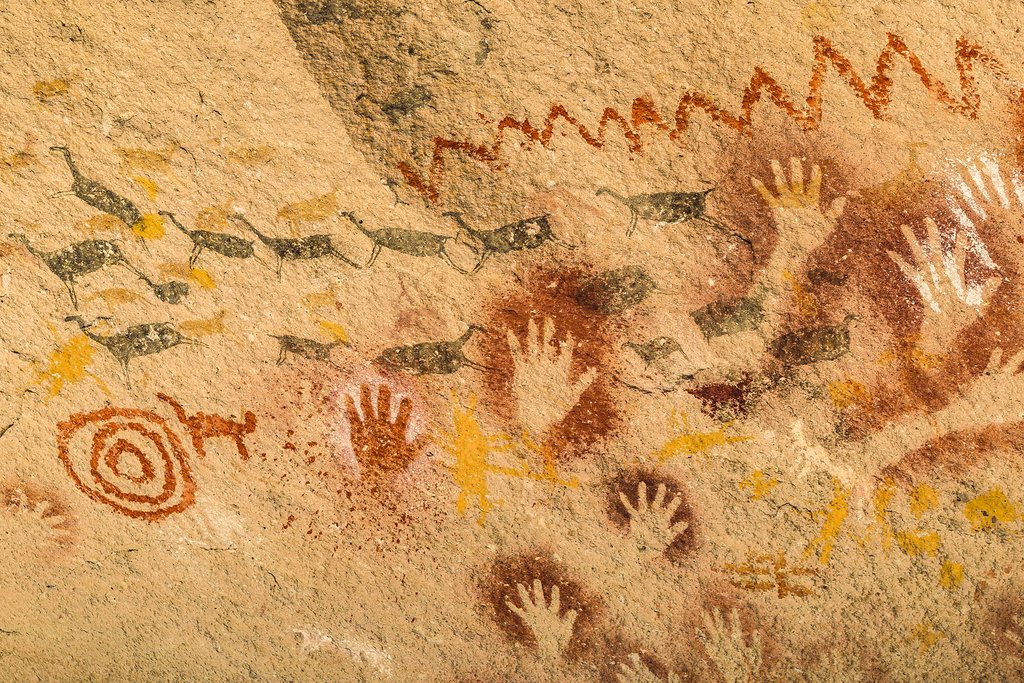
Located off the legendary Ruta 40, the Cueva de las Manos (Cave of Hands) is a UNESCO World Heritage site that showcases Argentina’s most incredible rock art, dating back an astonishing 9,370 years, approximately 7370 BC. This ancient site provides a remarkable window into the lives and beliefs of the early inhabitants of Patagonia, offering a tangible connection to a distant past. A 45-minute guided tour takes you along the vertical cliff walls, where you’ll be captivated by over 800 images, painted with pigments derived from natural minerals. These images, created by generations of indigenous people, tell stories of their daily lives, their spiritual beliefs, and their connection to the land.
The majority of the images are imprints of human hands, particularly the left hand, created by spraying pigment around the hand held against the rock surface. In addition to handprints, there are also drawings of guanacos, a vital source of food and materials for these early inhabitants, as well as depictions of hunting scenes, offering insights into their hunting techniques and social structures. Abstract rock art from a later period further enriches the site, revealing the evolution of artistic expression and cultural beliefs over time. If you look closely, you might even spot one handprint with six fingers, a unique anomaly that adds to the mystery and intrigue of the site, as well as puma paw prints and prints of a ñandú (rhea) foot, providing further glimpses into the fauna that shared the landscape with these early humans. The Cueva de las Manos is located on the way from the nondescript settlements of Perito Moreno to Bajo Caracoles; the scenic drive takes you through boundless steppe, providing a taste of the vast and remote Patagonian landscape.
Go Trekking in Parque Nacional Los Glaciares: A Land of Ice and Mountains
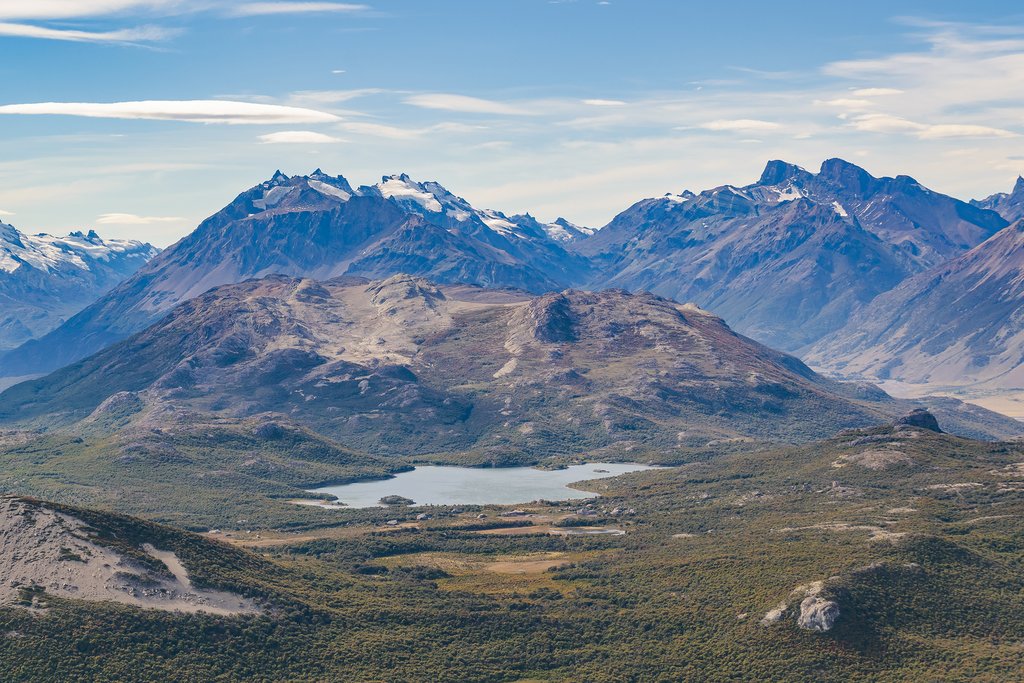
Parque Nacional Los Glaciares, a sprawling national park filled with majestic glaciers cascading down from rugged mountains, is divided into two geographically distinct halves, each offering its own unique allure and opportunities for exploration. The northern half of the park is accessed via the quaint town of El Chaltén and is centered around the iconic Fitz Roy mountain range, a mecca for rock climbers and trekkers from around the world. This area is characterized by its dramatic peaks, pristine glacial lakes, and challenging terrain, offering an unforgettable experience for outdoor enthusiasts.
Cerro Fitz Roy and Cerro Torre, two of the park’s most prominent peaks, offer world-class vertical ascents, attracting experienced climbers seeking the ultimate challenge. For those who prefer to explore on foot, a network of hiking trails connects the park’s peaks, glaciers, and glacial lagoons, offering a range of options from challenging day hikes to multi-day expeditions that involve camping on glaciers, providing a truly immersive experience in this icy wilderness. The town of El Calafate serves as the gateway to the southern half of the park, renowned both for Argentina’s most accessible and spectacular glacier, the Glaciar Perito Moreno, and for the mighty Lago Argentino, Argentina’s largest lake. Limited day trips run from El Calafate to the remote southwest corner of the national park, requiring two boat crossings and trekking to reach a spectacular icy lagoon overlooked by three glaciers, offering a unique perspective on the scale and beauty of this glacial landscape. The Parque Nacional Los Glaciares is a true testament to the power and beauty of nature, offering an unforgettable experience for all who visit.
View the Incredible Glaciar Perito Moreno: A River of Ice in Motion
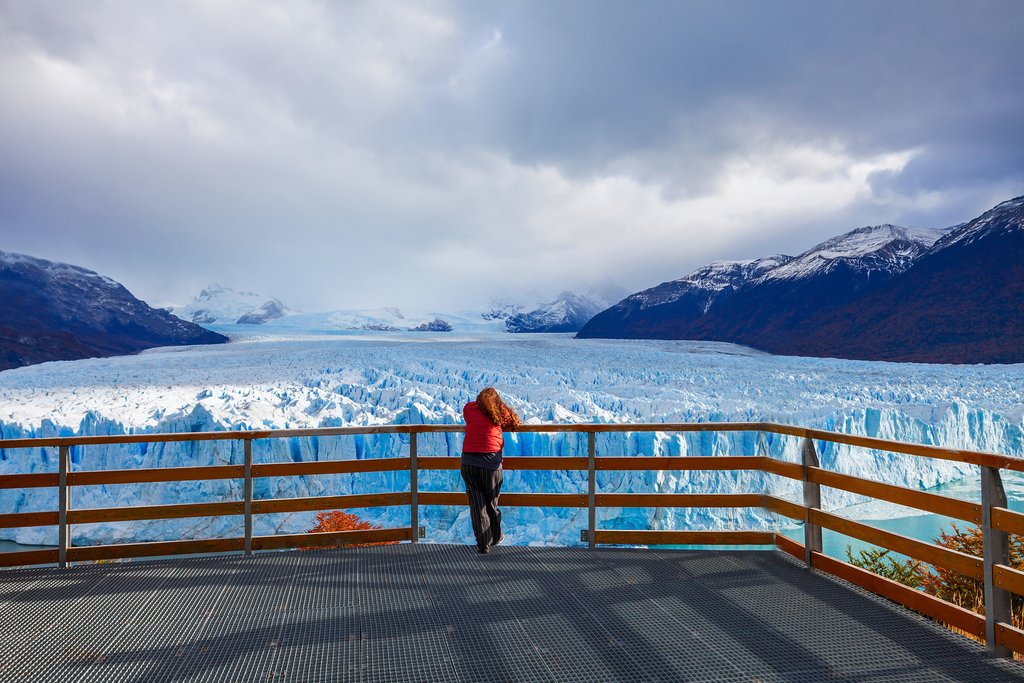
The undisputed star of the southern sector of Parque Nacional Los Glaciares is the Glaciar Perito Moreno, a colossal river of ice that is one of the world’s few advancing glaciers, a phenomenon that defies the global trend of glacial retreat. This immense glacier moves forward at a rate of approximately 2 meters per day, a seemingly slow pace that results in dramatic and awe-inspiring events. Every few years, the advancing ice dams a section of Lago Argentino, creating a natural dam that blocks the flow of water. As the water level rises, the pressure builds until it eventually breaks through the ice dam, unleashing a torrent of water in a spectacular display of nature’s raw power.
Towering over the Canal de Los Témpanos (Iceberg Channel) 50 miles (80 kilometers) east of El Calafate, the Perito Moreno Glacier stands at an imposing 60 meters high, stretches for 30 kilometers in length, and spans 5 kilometers in width. This colossal ice formation dominates the landscape, a breathtaking sight that leaves visitors in awe of its sheer scale and beauty. Visitors can explore the glacier from a series of strategically placed catwalks overlooking the ice, offering panoramic views and unparalleled photo opportunities. As you walk along the catwalks, you’ll be alerted to the calving of huge icebergs, which break off from the glacier’s face and crash into the channel with a dull boom, creating a dramatic and unforgettable spectacle. There are also two ways to get even closer to the glacier: taking a boat tour that navigates along the face of the ice, providing a unique perspective from below, or taking part in an ice-trekking tour, where you strap on crampons and walk right across the blue ice, experiencing the glacier firsthand. These tours can be arranged with tour companies in El Calafate. To avoid the crowds, it’s best to visit in the afternoon.
Immerse Yourself in the Climbing Culture at El Chaltén: A Trekker’s Paradise
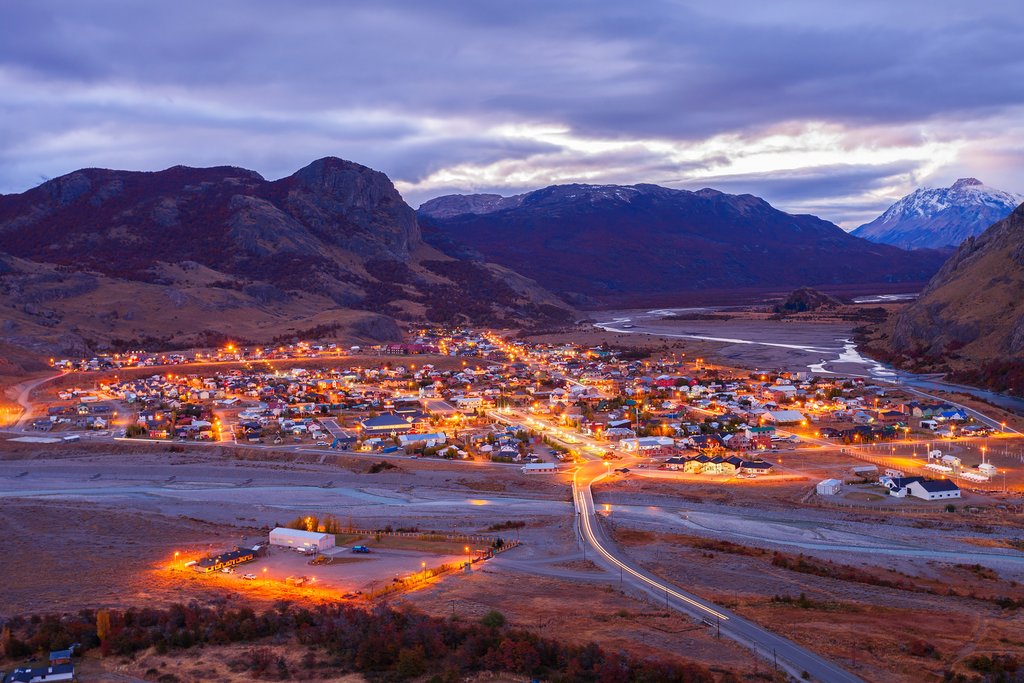
Nestled between the Rio Fitz Roy and the imposing Fitz Roy mountain range, at the very edge of Parque Nacional Los Glaciares, lies the picturesque village of El Chaltén, widely recognized as Argentina’s trekking and rock-climbing capital. Founded in 1985, El Chaltén has grown from a remote outpost into a thriving hub for outdoor enthusiasts, attracting visitors from all corners of the globe. Today, El Chaltén is a tidy cluster of streets, filled with Gore-Tex-clad trekkers and adventurers, with a permanent population of around 1000 people. The village offers a warm and welcoming atmosphere, with a range of services and amenities catered to the needs of outdoor enthusiasts.
El Chaltén serves as the ideal base for organizing a wide range of activities, including hikes to iconic viewpoints, challenging rock climbing trips, horseback rides through the Patagonian wilderness, kayaking adventures on glacial lakes, ice climbing excursions on frozen waterfalls, and fly-fishing expeditions in pristine rivers. In addition to its outdoor offerings, El Chaltén also provides opportunities to delve into the history of the region. It’s possible to visit the restored cabin of the original Danish pioneer Andreas Madsen, who settled nearby in 1912, contributing to the early development of the area. The cabin is meticulously maintained by the man’s great-grandson, offering a tangible link to the past. For such a tiny place, El Chaltén boasts an excellent dining scene, with a variety of restaurants and cafes serving up delicious meals to fuel your adventures. The village also offers numerous hotels, hostels, and guesthouses that cater to a range of budgets and preferences, although it’s important to book in advance, as accommodations fill up quickly during the high season.
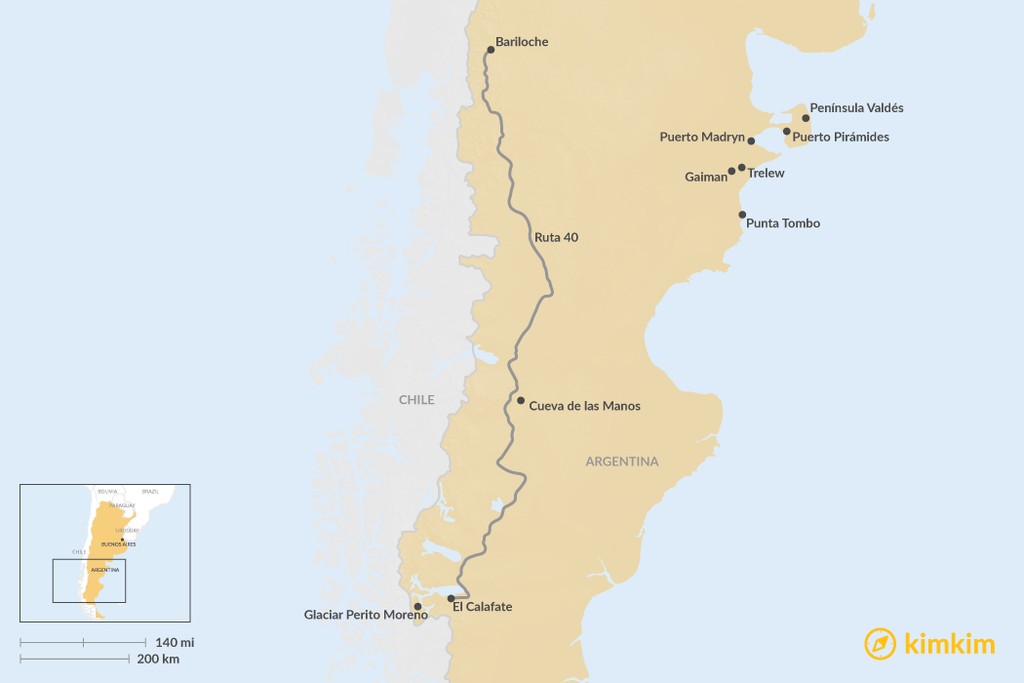
B-2027

